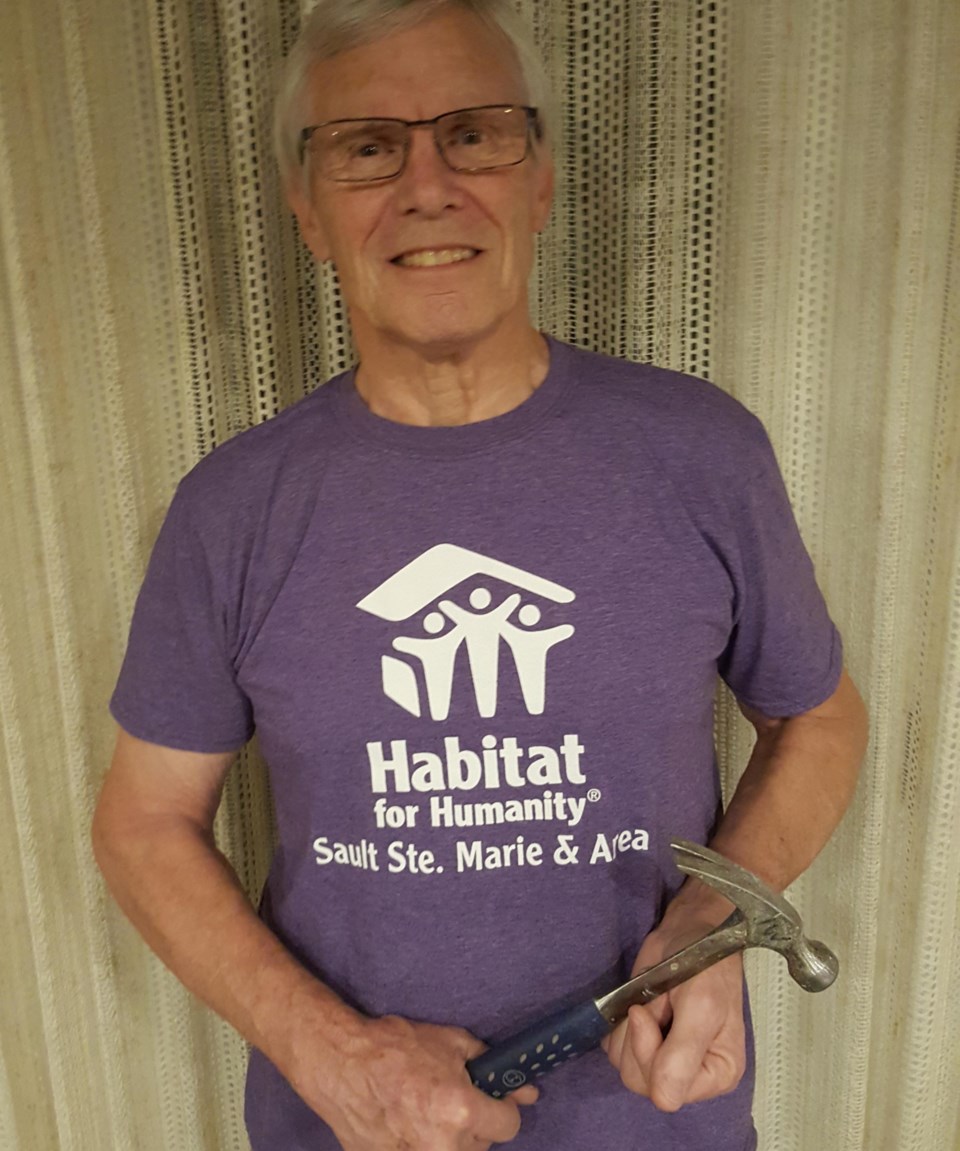John Willcock heard about Habitat for Humanity when his son started volunteering with the organization more than a decade ago.
“I thought about volunteering at the time,” says Willcock, “but I was busy with other projects and wasn’t able to put the time in.”
After retiring from his work as manager of a local engineering consulting company, he had time to spare, and decided to offer his services.
In his former position, he worked primarily in an office. While he contributes his expertise in AutoCAD and in planning approvals, he prefers to stay away from the organizational side of it. Habitat gives him opportunities to engage in the hands-on work that he loves.
“I’ve always enjoyed woodworking, and working with my hands throughout my life,” he says. “I’m what you call an avid DIY-er. I help with everything from sweeping floors to drywalling; whatever’s needed on the day. I can turn my hand to most things.”
Willcock has built four homes, and multiple salvage jobs (where a generous homeowner planning to demolish a house contacts Habitat and asks if they would like to salvage any resellable items).
He volunteers an average of three days a week, ramping up to five days as the house nears completion. On any given day, there’s usually two or three volunteers working alongside; “We’re one big happy family,” he says. “They do have a program now [working with Sault College’s construction students], so we’re fortunate in that they’re able to help out . . . students to learn the craft; at the same time, they’ll help us with the build. And I’m learning new skills all the time, particularly with the Sault College group there. There’s always something to learn.”
Willcock has been involved with installing framing, siding, hanging doors, drywall, painting, insulation, flooring, trim, and landscaping.
“I guess you could call me a jack of all trades, master of none,” he laughs. He enjoys most of the build, but finds trim work the most satisfying. “You’re putting on the glitter,” he says. “It goes from looking rough to a finished house.”
He was drawn to Habitat because they help to achieve the dreams of people who couldn’t otherwise afford to move into — and own — a home.
“To me, that’s very satisfying,” he says, “to be part of that process. And to work with the home owners, because they put in sweat equity; you get to meet them, and understand where they’re coming from, and the issues they’ve had. And how much it means to them to get out of their situation and into a very nice home.”
“The last family — they were super involved in the build process; they also helped at the Re-store. They were so gung ho; it meant so much for them. They were willing to do anything and everything they could. They’re obliged to put in — I think it’s 500 hours as a family, minimum. They put in way more than that; because they wanted to do it. They wanted to be part of the process and see the house being built.”
The family moved in this summer. Willcock made and presented them with a wooden key holder as a memento. “Stopped by their house not long ago to see how they’re doing,” he says. “They’re settling in nicely; enjoying their new house.”
“I’ve always liked helping people. I have some skills that a lot of people don’t have, so I’m able to help my neighbors with projects that they can’t handle themselves. With Habitat, I’m able to see where my help is needed, and provide it. It keeps me occupied. It keeps me busy. It keeps me motivated. Selfishly, it makes me feel good, because I can help people out.”
Habitat for Humanity can always use donations and volunteers — particularly skilled tradespeople — to get involved. Visit here for more information.
